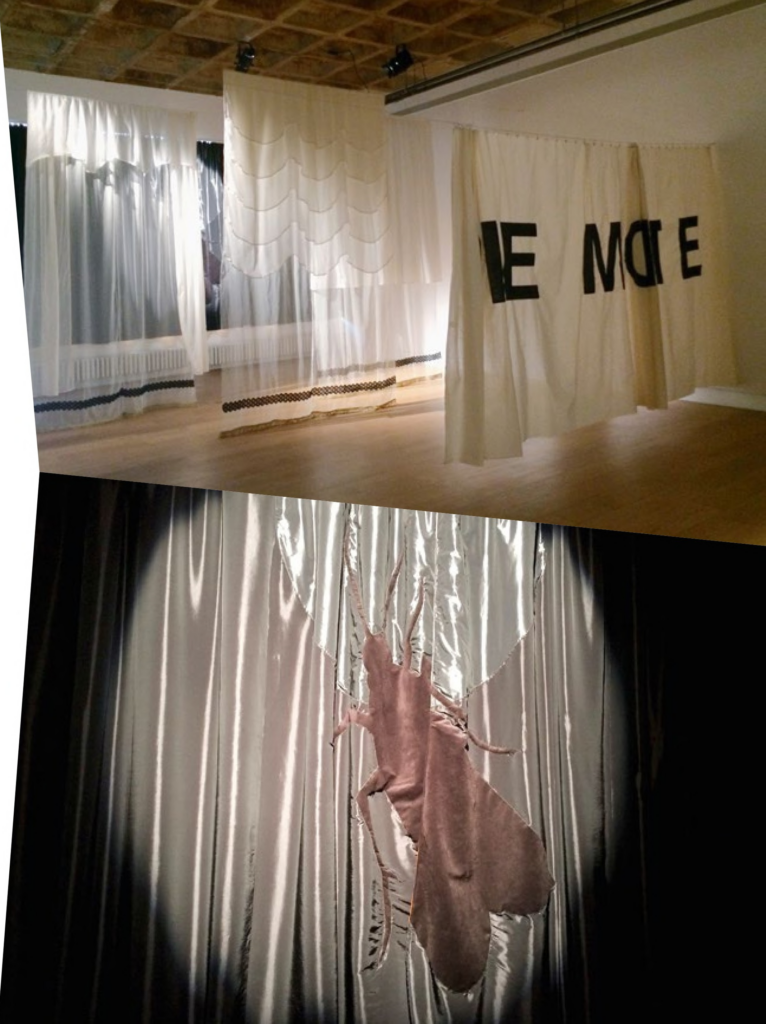REGINA MARIA MÖLLER
She was born in Zakopane, Poland, and lives and works in the village of Czarna Gora, Poland
DIE MOTTE (The Moth)
2018/2024

Regina Maria Möller is an artist, writer, and educator. In 1994 she founded the magazine regina—an artwork utilizing the format of popular women’s magazines to question the construction and representation of female identities. In the same year she started her label embodiment, under which she produces prototypes of clothes and interior objects as limited-edition wearable sculptures and works of art in use. embodiment operates within the undefined space between the body and environment, probing the social and cultural codes embedded in these interfaces. Möller also develops multilayered installations and research projects; most recently she collaborated with scientists on The Mask—Arrayed (2020–22), an investigation of the face mask hosted by the Max Planck Institute for the History of Science in Berlin.
In the installation DIE MOTTE (The Moth, 2018/2024), Möller creates a stage like space defined by a set of moveable curtains that reference different historical theater curtains. The central protagonist in this setting is the elusive and enigmatic character of the common clothes moth. Generally disliked for its destructive habits—its larvae feed on the keratin present in high-quality fibers such as wool and silk—the insect is also a guarantor of quality. For the artist, it is a sign of the natural and the physical in our obsessively synthetic and digital times. The insect is announced with top billing in large lettering on a nettle curtain. It appears again, highlighted as embroidery on a two-sided portal curtain; on the one side, it is shown flying into the light, and on the other, vanishing into the golden ochre of the velvet fabric. The moth can also be discovered as a painted motif, mysteriously crawling on a porcelain vase that is displayed in a glass cube and superimposed with a QR-code. This code and others placed nearby permit the viewer to seek out additional porcelain vases with moth motifs, but only in the disembodied realm of the digital.
A play between presence and absence, DIE MOTTE is a reminder of our physical impermanence. Viewers are invited to walk through the spot-lit space and move the theater curtains while watching others and being watched—as shadows projected onto the fabric. This animated show of bodies, lively but immaterial, visualizes the dissolution of the physical in the increasing digitization of our everyday experiences.
